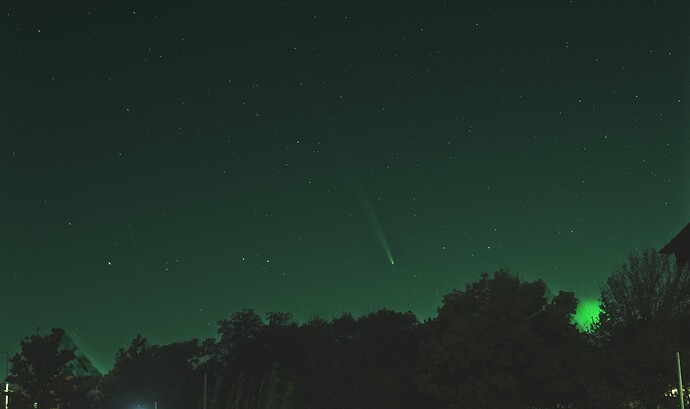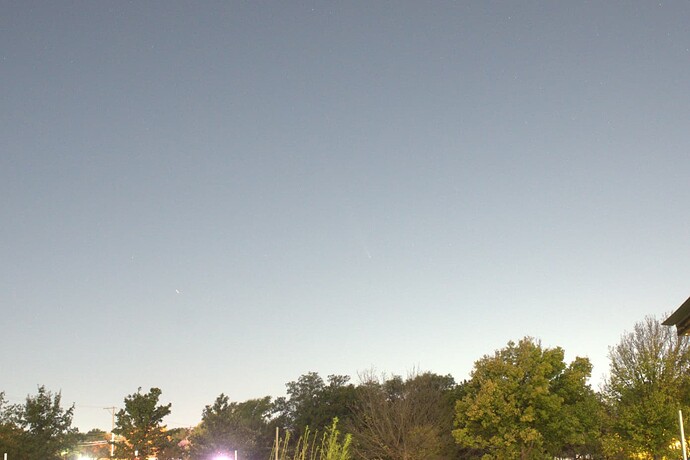On Thursday, I setup a few cameras to try to get pictures of the comet, which initially didn’t seem to turn out well at all, but I stacked them up and it turned out to be a lot better than I expected so I may go back and redo it ‘properly’.
First the cropped image
Capture wise, this was a Nikon D5300 with a 28mm f/2.8 AF lens (manually focused) setup in Manual mode on a stationary tripod:
- 4 second
- f/8 Aperture
- ISO 800
It was setup to capture every 12seconds (Which is usually something I do so I get a few seconds of it on the screen.)
It captured about 350 images, of which about 142 were registered correctly with regard to each other using Siril (Open source astronomy stacker: https://siril.org/ )
- Basic conversion and debayer to a fits sequence.
- Registration with a cropped area on the sky. (Due to motion/stars disappearing is why only 142 registered, I could and probably will try for more later.)
- Stacked with Sum stacking (which is the simplest, basically add up all the images)
This was then opened in Gimp (https://www.gimp.org/), along with the last image. A copy was made of the stack, The bright lights were masked, and then it was blurred (which is a simplistic, method of background removal which was absolutely needed due to the light pollution from wichita, And this also created the green light in the lower right, though I’m not entirely sure why and haven’t dug into it.) and layer set to subtractive at around 90%, and then layer->create image from visible. Duplicated a few times, and set to addition to brighten it up. layer->create image from visible. (Actually had to do this twice as I messed up the blur/subtraction) Then the color->levels/curves was adjusted to brighten it up and see more of the tail.
This produced this image:
To which a mask of the last image was made, and added, then the image was cropped to the top. You can still see some of the results of the stacking especially in the lower left corner, which could have been eliminated at the start with a mask, but I didn’t expect anything good out of it.
It’s pretty amazing to have that come out of this sort of soup (different automated conversion, so this is SUPER BRIGHT by comparison), but that’s why a lot of astronomy images are stacked as it allows detail recovery. Though usually not for going directly over light pollution. Stacking does have the benefit of removing moving objects like the plane in the lower left of that particular frame.


